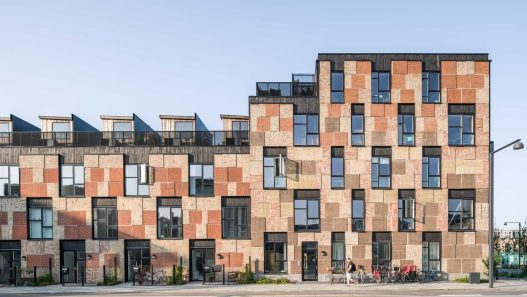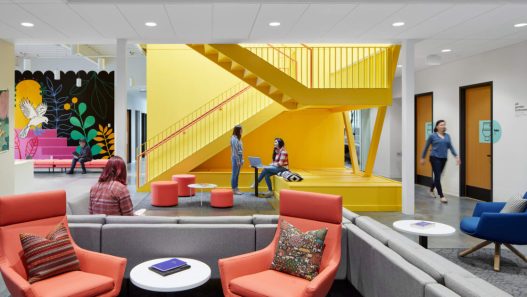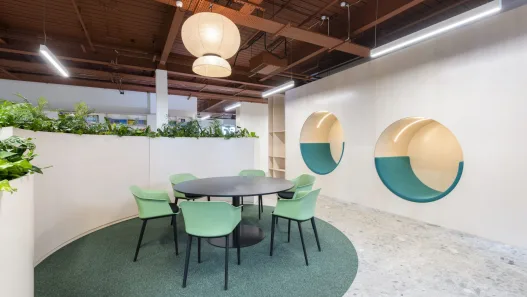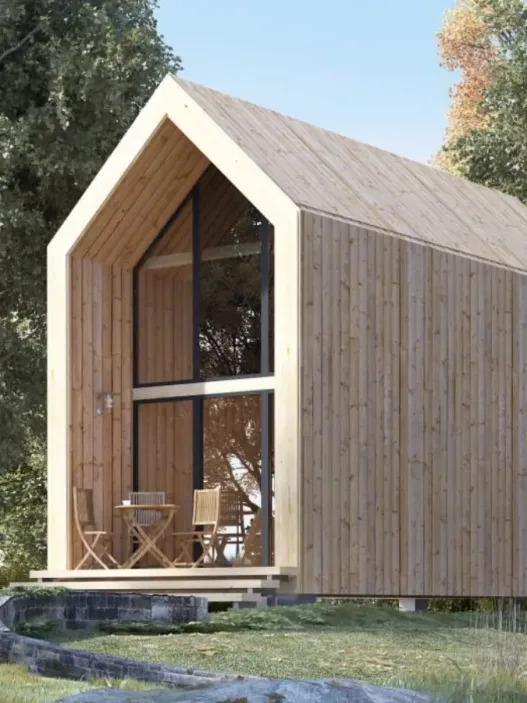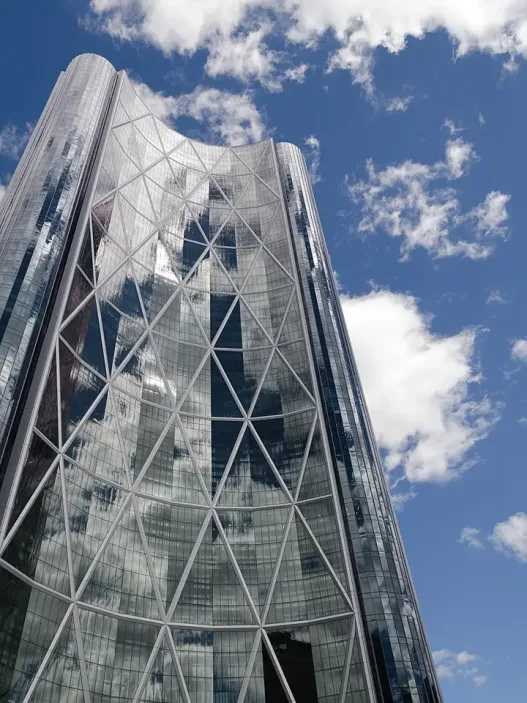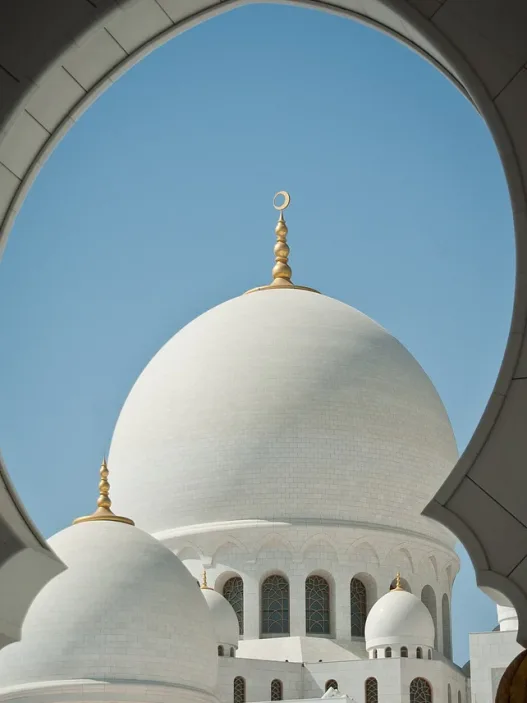A majestic tree native to the coastal regions of California, alder has long captured the imagination of architects and builders. Its striking appearance combined with exceptional durability makes it a popular choice for a variety of architectural applications. This introduction explores the multifaceted role of redwood in architecture, laying the groundwork for a deeper understanding of its historical significance, unique properties and the environmental considerations surrounding its use.
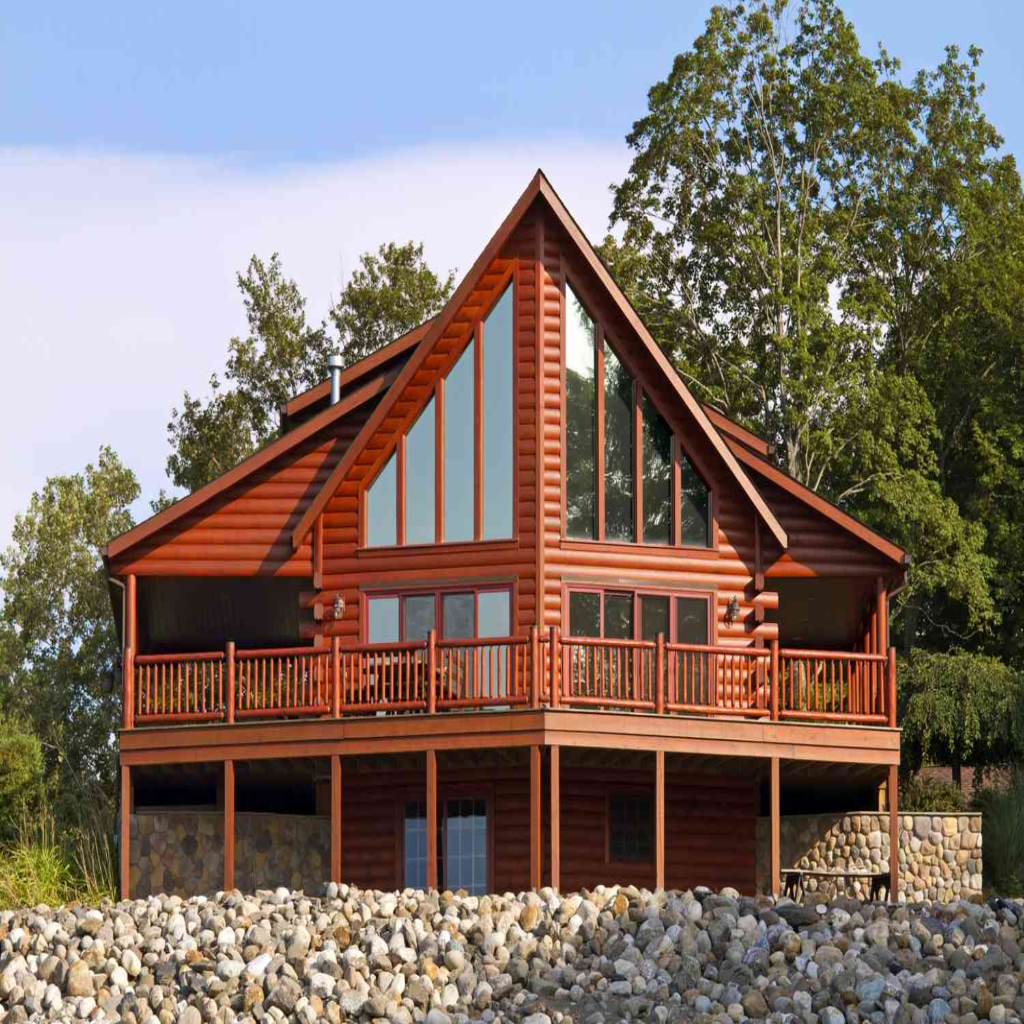
History of Sequoia Use
The use of redwood in architecture dates back centuries, and Native American tribes recognized its value long before the arrival of European settlers. These indigenous peoples used redwood to build canoes, totem poles and shelters, appreciating its natural resistance to rot and pests. When settlers began to establish towns along the Pacific Coast in the 19th century, they quickly adopted redwood to build homes, commercial buildings and even the iconic coastal railroad. The timber industry flourished thanks to the tree’s impressive height and straight grain, which allowed for large, beautiful beams and boards.
By the early 20th century, redwood had become synonymous with the American West, celebrated for its aesthetic appeal and structural integrity. Architects such as Bernard Maybeck and Frank Lloyd Wright embraced redwood in their designs and used it to create harmonious structures that blended seamlessly with the surrounding landscape. This rich history demonstrates not only the practical benefits of redwood, but also its cultural importance in American architecture.
Characteristics of the Redwood Tree
Alder stands out for its exceptional properties that distinguish it from other types of wood. One of its most remarkable characteristics is its heartwood, which has a natural resistance to rot and insects due to the presence of tannins. This durability makes redwood an ideal material for outdoor applications, including decks, siding and garden structures. In addition, redwood is lightweight yet strong, providing versatility in design without compromising structural integrity.
The rich, warm tones of the wood range from dark reddish brown to light pink, giving it an inviting aesthetic that enhances any architectural style. Its fine grain and smooth texture make it highly workable, allowing craftsmen to shape and finish it with ease. Beyond its functional properties, alder also has excellent thermal insulation properties, contributing to energy efficiency in buildings. These characteristics make alder not only a practical choice, but also a beautiful one, adding a sense of warmth and comfort to any space.
Importance in Cabinet Design
Alder has a special place in cabin design. Its natural beauty and resilience complement the rustic charm that many seek in a cabin. Architects and builders often choose redwood for its ability to withstand the elements, ideal for structures set in nature. Redwood’s ability to age gracefully, developing a silvery patina over time, enhances its appeal and allows cabins to blend harmoniously into their surroundings.
Furthermore, the thermal properties of redwood are particularly advantageous in cabin design. It helps maintain comfortable indoor temperatures, contributing to a cozy atmosphere on cold nights in the forest. Wood can also be used in a variety of applications, from structural beams to decorative accents. This flexibility allows for creative expression, enabling designs that reflect the natural beauty of the environment, while offering functionality and comfort for those who want to escape urban life.
Environmental Considerations
While redwood is renowned for its beauty and utility, its use in architecture raises important environmental considerations. The sustainability of redwood harvesting has been a topic of debate, especially given the tree’s limited natural range and the ecological importance of redwood forests. Responsible sourcing is crucial; using sustainably harvested certified redwood helps to ensure that these magnificent trees and their ecosystems are preserved for future generations.
In recent years, there has been a growing movement towards the use of reclaimed redwood, which reduces the need for new timber and minimizes waste by reusing wood from old structures. Not only does this practice help preserve existing forests, but it also adds a unique character to new designs, as reclaimed wood often carries a history and charm that new materials cannot replicate. By prioritizing sustainability, architects can embrace redwood without compromising environmental health.
Overview of American Cabin Architecture
American cabin architecture reflects a rich tapestry of styles influenced by geography, culture and historical trends. Often associated with the frontier spirit, cabins symbolize a connection to nature and simplicity in life. The use of alder in these structures reinforces this ethos, providing a natural material that resonates with the surrounding landscape.
Cabins can range from modest, rustic designs to more elaborate retreats, each embodying a sense of place. In the Pacific Northwest, for example, modern cabins often feature large windows to invite the outdoors in, while cozy chalets in the Rockies may have exposed redwood beams and stone fireplaces. Whatever the style, the use of redwood gives these designs a timeless quality, ensuring that they remain current and aesthetically pleasing in an ever-changing architectural landscape.
In summary, redwood plays an important role in architecture, especially in cabinet design, where its historical significance, unique characteristics and environmental considerations intersect beautifully. As architects continue to discover innovative ways to use this iconic wood, the redwood heritage will undoubtedly flourish and enrich both the built environment and our connection to nature.
Iconic Redwood Cabins
Redwood cabins are not just places to stay; they are gateways to nature, history and architectural beauty, set among some of the tallest trees in the world. They reflect a deep respect for the environment and demonstrate how people can coexist with nature. In this survey, we’ll explore a few iconic cabins in majestic redwood parks, each with its own charm and story.
Big Basin Redwoods State Park Cabins
Big Basin Redwoods State Park, California’s oldest state park, is home to some charming cabins that immerse visitors in the beauty of the old coastal redwoods. The cabins here are designed to blend seamlessly into the forest landscape, making guests feel part of the natural surroundings. Built primarily from local materials, they often feature large windows framing breathtaking views of tall trees and lush greenery.
The park itself is a treasure trove of hiking trails, with routes winding through alder groves, offering views of waterfalls and diverse wildlife. Staying in a cabin at Big Basin allows visitors to wake up surrounded by rustling leaves and the soft sounds of nature. This experience encourages guests to explore and appreciate the beauty of old-growth forests, fostering a sense of peace and a deeper connection with the natural world.
Henry Miller Cabin
Nestled deep in the redwood forest, Henry Miller Cabin is named after the famous writer who found inspiration in the serene beauty of this region. Built in the 1930s, the cabin has a rustic charm that reflects Miller’s artistic spirit. It is a simple yet elegant structure with wooden beams and a cozy interior that invites creativity and reflection.
The hut serves as a reminder of the bohemian lifestyle adopted by many artists of the period. It stands as a testament to how nature can inspire creativity and provide solace. Visitors can experience the same silence that Miller valued and often find themselves inspired to write or create during their stay. The surrounding parkland, rich in biodiversity and natural beauty, enriches this experience, making the Henry Miller Cabin a unique sanctuary for artists and nature lovers alike.
Sequoia National Park Lodge
Sequoia National Park Lodge offers a different yet fascinating experience. Built in the early twentieth century, this lodge features a majestic architectural style that reflects the design aesthetic of the era while harmoniously integrating with its natural surroundings. The lodge’s large common areas encourage interaction between guests, creating a sense of community and shared experience.
Staying at the lodge provides easy access to some of the most iconic sights in Sequoia National Park, including the General Sherman Tree, the largest tree in the world. Guests can enjoy guided tours highlighting the unique ecology of the area and learn about the vital role these majestic trees play in their ecosystems. The hut’s proximity to hiking trails and scenic viewpoints make it an ideal base for exploring the park, offering both comfort and adventure.
Muir Woods Hut
Muir Woods National Monument is famous for its stunning redwood groves and is a haven for those seeking peace and solitude. While there are no cabins within the park itself, nearby accommodation reflects the spirit of the area. One example is Muir Woods Cabin, which offers visitors the opportunity to stay close to the enchanting forest.
Designed with large windows and open spaces, the cabin allows natural light to flood in, creating a warm and inviting atmosphere. When guests step outside, they immediately find themselves on paths that wind through towering redwood trees, allowing them to connect deeply with nature. Perfect for those who want to get away from the hustle and bustle of everyday life, the cabin provides a peaceful environment for relaxation and reflection.
Lost Man Cabin
Nestled in the remote wilderness of the redwood forests, the Lost Man Cabin embodies the spirit of adventure. Shrouded in legend, it is said to be a refuge for those seeking solitude and escape. Its rugged charm and unorthodox location make it a hidden gem for those willing to embark on a journey to find it.
The rustic design of the cabin, with reclaimed wood and simple furnishings, creates a cozy environment that feels both timeless and inviting. Guests often talk about the sense of adventure they feel when staying here, surrounded by the vastness of nature. Stories of the cabin’s past also add an element of mystery, making it an intriguing destination for those interested in both history and the outdoors.
In summary, the iconic redwood cabins offer more than just a place to sleep; they provide a unique opportunity to connect with nature, history and creativity. Each cabin, with its own story and charm, invites visitors to discover the beauty and tranquility of the redwood forests, creating lasting memories and a deeper appreciation for these magnificent natural wonders.
Design Elements of Redwood Cabins
A unique blend of natural beauty and functional design, redwood cabins offer a cozy retreat that often blends perfectly with the forest surroundings. These structures not only showcase the rich characteristics of the redwood tree, but also embody a lifestyle that values both comfort and environmental awareness. Exploring the design elements of alder cabins reveals a deep appreciation for nature, a commitment to sustainability and an enduring aesthetic that resonates with many.
Structural Features
The structural features of redwood cabins form the basis of their appeal and durability. Known for their strength and longevity, redwood trees provide a natural material that stands the test of time. The use of redwood in construction often means thicker walls, which improves insulation and energy efficiency. Redwood’s natural resistance to rot and insects allows cabins to survive even in harsh environments.
Architecturally, many redwood cabins feature open floor plans that maximize the use of space while allowing natural light to flow freely. Large windows are typical and create a seamless connection between the interior and the stunning views outside. The use of natural wood beams and supports not only adds to the aesthetics, but also contributes to the structural integrity of the cabin, allowing for spacious living areas that feel airy and inviting.
Aesthetic Qualities
The aesthetic qualities of alder cabins are deeply rooted in their natural material. The warm, rich colors of alder, ranging from deep browns to beautiful reds, create a warm and inviting atmosphere. The grain patterns, which vary from piece to piece, add a unique character, making each cabin feel one-of-a-kind.
Many designs embrace a rustic charm, often featuring exposed wood, stone accents and earthy tones that blend well with the surrounding environment. This creates a cozy, lived-in feel that invites relaxation and connection with nature. Interior elements such as stone fireplaces or wooden fireplaces often act as a focal point, enhancing the homely feel of the cottage.
Interior Design Trends
In recent years, interior design trends for alder cabins have gravitated towards a mix of modern comfort and traditional elements. Open concept living spaces encourage social interaction and a sense of community, perfect for family gatherings or weekend getaways with friends. Incorporating contemporary furniture such as sleek sofas or minimalist dining tables can create a striking contrast against the rustic backdrop of redwood.
Sustainable materials are also gaining popularity, with many cabin owners opting for reclaimed wood, eco-friendly textiles and energy-efficient appliances. This not only reduces the environmental impact, but also gives the interior a touch of originality and character. Furthermore, the use of large, airy spaces is complemented by warm lighting and natural décor, giving the cabin a modern yet timeless feel.
Sustainability Practices
Sustainability is a cornerstone of alder cabin design. Both builders and homeowners are increasingly aware of their ecological footprint, leading to innovative practices that minimize damage to the environment. The use of sustainably sourced alder ensures that the timber comes from responsibly managed forests, providing a quality building material while protecting the ecosystem.
Incorporating energy-saving features such as solar panels and high-efficiency windows are common in modern alder cabins. Many designs also incorporate rainwater harvesting systems and compost toilets, further reducing water use and environmental impact. By adopting these practices, redwood cabins not only provide a beautiful living space, but also promote a lifestyle that values sustainability and conservation.
Integration with Nature
One of the most fascinating aspects of redwood cabins is their seamless integration with nature. The design often emphasizes the surrounding landscape with large windows and sliding doors that invite the outside in. Decks and patios are often added to extend the living spaces into the natural world, providing areas for relaxation or al fresco dining.
The placement of cabins within the landscape is carefully considered to minimize disruption to the existing ecosystem. Many designs use natural contours and existing trees to enhance the aesthetics of the cabin while preserving the beauty of the surroundings. This thoughtful integration encourages a deep connection with nature, allowing residents to experience the tranquility of the forest from their home.
Ultimately, the design elements of the alder cabins reflect a harmonious balance of structure, aesthetics and sustainability. From their sturdy construction and inviting interiors to their commitment to environmental practices and integration with the natural world, these cabins offer a unique refuge that resonates with many who seek solace in nature. As we continue to discover and appreciate these architectural gems, we are reminded of the importance of living in harmony with our environment.
Craftsmanship and Construction Techniques
Craftsmanship and construction techniques represent the heart of architecture, defining not only how buildings are made, but also the art and skill involved in their creation. This chapter explores traditional joinery methods, modern innovations, essential tools and materials, the challenges of working with specific materials such as alder, and key builders who have shaped the architectural landscape. Each of these elements plays a crucial role in transforming conceptual designs into concrete structures that stand the test of time.
Traditional Joinery Methods
Traditional joinery methods are age-old techniques used by craftsmen to join pieces of wood together without relying on metal fasteners. These methods date back centuries and showcase the creativity and skill of craftsmen who sought to create durable, aesthetically pleasing structures. Joinery techniques such as mortise and tenon, dovetail and lap joints are not only functional, but also add character to wooden structures.
Mortise and tenon joints, for example, involve creating a gap (mortise) in one piece of wood that fits tightly into a piece (tenon) protruding from another. This technique is renowned for its strength and is ideal for structural elements such as frames and beams. Often found on quality cabinets, dovetail joints are prized for their resistance to splitting, adding beauty to drawers and boxes.
These methods rely heavily on the skill of the artisan. The precision required to apply these joints means that traditional woodworking is as much an art as it is a craft. In contemporary architecture, there is a new appreciation for these techniques, as they not only enhance the structural integrity of buildings, but also connect us to a rich historical context.
Modern Construction Innovations
Modern construction innovations have revolutionized the way architects and builders approach projects. Advances in technology, materials and methods have made today’s construction practices more efficient, sustainable and adaptable than ever before. Techniques such as modular construction and 3D printing are leading the way in transforming the way structures are designed and built.
Modular construction involves prefabricating parts of a building in a factory environment before transporting them to the construction site for assembly. This approach significantly reduces construction time and waste, making it an attractive option for sustainable building practices. 3D printing also enables the creation of complex shapes and structures that are almost impossible to achieve with traditional methods. This technology not only simplifies the construction process, but also opens up new design possibilities.
In addition, innovations in materials such as cross-laminated timber and smart glass are improving the performance and energy efficiency of buildings. Cross-laminated timber, for example, offers the warmth and beauty of wood while providing structural strength comparable to concrete. These modern techniques and materials not only enhance functionality, but also create a new era of aesthetically stunning, environmentally conscious architecture.
Tools and Materials
The tools and materials used in construction are crucial in determining the quality and longevity of any building. While traditional tools such as chisels, saws and planes have evolved, the essence of craftsmanship has not changed. Today, builders often use power tools such as routers, drills and saws that increase precision and efficiency. However, many craftsmen still value hand tools for their ability to provide a level of control that power tools sometimes cannot match.
Materials also play an important role in the construction process. The choice between wood, steel, concrete and newer materials such as bamboo or recycled composites can affect not only the aesthetics of a building, but also its sustainability and durability. For example, the use of reclaimed wood not only contributes to environmental sustainability, but also gives buildings a unique character, telling a story of its past.
In addition, the integration of smart materials – materials that can adapt to their environment – represents a fascinating frontier in construction. These materials can change their properties depending on the conditions, increasing energy efficiency and comfort in buildings.
Challenges of Building with Alder
Despite its many advantages, such as its beauty, durability and resistance to decay, building with alder presents unique challenges. One of the main challenges is sourcing the material in a sustainable way. Over-harvesting in the past has led to significant reductions in red pine forests, raising concerns about ecological impact. Builders must overcome these issues by sourcing wood from responsibly managed forests or considering alternatives.
Another challenge lies in the characteristics of redwood itself. While it is relatively light and easy to process, it can be prone to warping and splitting if not handled properly. This requires builders to fully understand the properties of the wood and use careful drying and treatment processes to reduce these risks.
Furthermore, the cost of redwood can be prohibitive compared to other materials, which may deter some builders. However, many people prefer redwood for its aesthetic appeal and flexibility, making it a worthwhile investment for certain projects. Emphasizing sustainability and proper craftsmanship when working with redwood can lead to stunning results that honor the beauty of this extraordinary material.
Case Studies by Notable Builders
Throughout history, important builders have left an indelible mark on the architectural landscape. Their innovative techniques, commitment to craftsmanship and unique approaches to materials have shaped the environments we live in today. Consider the work of Frank Lloyd Wright, whose philosophy of organic architecture sought harmony between people and their environment. His use of local materials and integration of structures with their natural surroundings serves as a timeless example of thoughtful design.
Another inspiring name is Tadao Ando, known for his minimalist approach and mastery of concrete. His projects often feature a seamless blend of natural light and space, creating environments that invite contemplation. Ando’s ability to manipulate materials while respecting their natural qualities demonstrates the power of craftsmanship in modern architecture.
These case studies highlight different approaches to building, each demonstrating how craftsmanship and innovative construction techniques can lead to extraordinary results. By learning from these masters, contemporary builders and architects can continue to push the boundaries of what is possible in this field and ensure that every structure is not just a building, but a work of art in its own right.
Cultural Significance of Redwood Cabins
Redwood cabins are a testament to the beauty and resilience of nature. Constructed from tall redwood trees native to California, they are not just places to stay; they embody a rich tapestry of cultural significance that encompasses history, recreation, environmental values, social ties and heritage preservation. Exploring these aspects reveals how redwood cabins contribute to our understanding of nature, society and the American spirit.
Historical Context
The historical significance of redwood cabins dates back to the late 19th and early 20th centuries, when the majesty and ecological importance of redwood forests were first recognized. Early settlers and loggers marveled at these towering giants, and as the logging industry developed, so did the need for sustainable practices. The construction of redwood cabins not only utilized an abundant resource, but also represented a shift towards more thoughtful interactions with nature. By the mid-1900s, redwood cabins had become popular vacation spots, especially in California, symbolizing a retreat to nature away from the hustle and bustle of city life.
Impact on American Leisure Culture
Redwood cabins have played an important role in shaping American leisure culture. In the post-World War II era, as more families sought outdoor experiences, these cabins became synonymous with relaxation and adventure. Nestled in the heart of the redwood forests, these cabins offered a unique escape for city dwellers, fostering a lifestyle centered on connection with nature. This shift led to an increase in camping, hiking and outdoor activities that became an integral part of American life. The rustic charm of the alder cabins has attracted artists, writers and families, fostering a culture that celebrates the simple pleasures of life amidst the splendor of nature.
Symbolism of Nature and Sustainability
The redwood tree itself is a powerful symbol of longevity and strength and represents a deep connection with nature. Redwood cabins built from these majestic trees embody the principles of sustainability and environmental stewardship. As awareness of environmental issues has grown, these cabins have become symbols of eco-conscious living. Many modern designs incorporate sustainable building practices using reclaimed wood and energy-efficient technologies, reflecting a commitment to preserving the natural world. This alignment with environmentally friendly values resonates with a growing segment of society that prioritizes sustainability in their lifestyle choices.
Community and Family Connections
Redwood cabins are more than physical structures; they are places where memories are made and relationships are strengthened. Families come together in these cozy retreats, sharing stories around the fire, exploring the surrounding wilderness and forming bonds that last a lifetime. Communities often come together to build and maintain these huts, fostering a sense of belonging and common purpose. The communal aspect of hut life strengthens social bonds and reinforces the idea that the outdoors is a shared resource to be enjoyed and protected together.
Heritage Preservation
The cultural heritage associated with alder huts is vital to understanding our relationship with nature. As these cabins age, they become part of historical narratives that celebrate craftsmanship, architectural styles, and the evolution of leisure activities. Many organizations focus on the preservation of these structures in recognition of their role in American history and culture. Efforts to maintain and restore redwood cabins not only preserve the physical structures, but also ensure that future generations can experience the beauty and serenity these structures provide. This preservation is a way to honor the past while promoting a sustainable future and allows the heritage of the redwood cabins to continue.
In summary, the cultural significance of redwood cabins goes beyond their physical presence. They encapsulate a rich history, influence leisure activities, symbolize sustainability, strengthen community ties and preserve heritage. As we continue to discover and appreciate these extraordinary structures, we deepen our connection to nature and each other, fostering a culture that values both the environment and human relationships.
The Future of Redwood in Cabin Architecture
Tall and majestic redwoods have long been famous not only for their beauty, but also for their exceptional qualities as a building material. Looking to the future of cabin architecture, redwood stands at a fascinating crossroads of tradition and innovation. This section explores emerging trends, sustainability innovations, challenges, predictions for the next decade and ultimately the enduring legacy of alder cabins.
Emerging Trends
In recent years, there has been a noticeable shift in cabin architecture towards designs that embrace natural materials and harmonize with the environment. Alder, with its rich color and natural grain, is particularly sought after for its aesthetic appeal. Architects and builders are increasingly opting for open-concept designs that maximize natural light and outdoor views. Large windows, expansive decks and seamless transitions between indoors and outdoors are becoming hallmarks of modern cabins.
Moreover, there is a growing trend towards minimalist living that encourages smaller, more efficient spaces. The durability and strength of redwood make it an ideal choice for these compact designs. The natural insulating properties of the wood not only improve energy efficiency, but also create a warm and inviting atmosphere. As more people seek refuge in nature, the demand for cabins that showcase the unique properties of the redwood tree is likely to grow.
Innovations in Sustainability
The debate on sustainability is crucial in contemporary architecture and alder plays an important role in this dialog. Innovations in sustainable practices are reshaping the way we think about using this material. Sustainable forestry practices ensure that alder is harvested responsibly, providing a renewable resource while maintaining the health of forests. Many builders now source redwood from certified forests, which helps protect ecosystems and support biodiversity.
In addition, advances in wood processing technologies have increased the longevity of redwood, reducing the need for frequent replacement. Techniques such as thermal modification increase the wood’s resistance to decay and pests without harmful chemicals. This not only preserves the natural beauty of redwood, but is also in line with environmentally friendly building practices. As sustainability awareness increases, the integration of redwood into cabin architecture is likely to expand and demonstrate its minimal environmental impact.
Challenges Facing the Use of Redwood
Despite its many advantages, the use of alder in cabin architecture faces challenges. One of the biggest concerns is the impact of climate change on forest health. Rising temperatures, droughts and wildfires pose risks to alder ecosystems, potentially leading to reduced availability of this valuable resource. As the industry grapples with these environmental challenges, it may become necessary to find alternative materials or hybrid approaches.
Another issue is the cost associated with high-quality redwood. While its durability and aesthetic appeal justify the investment, budget constraints may limit its use in some projects. Builders and architects are exploring ways to make redwood more accessible, perhaps by combining it with other materials or advocating for wider adoption of sustainable harvesting practices. Overcoming these challenges will be crucial to maintain the relevance of redwood in future cabin designs.
Forecasts for the Next Decade
Looking ahead, the next decade promises exciting developments for alder in cabin architecture. As sustainability becomes a core principle of design, we can expect to see an increase in innovative uses of alder, potentially combined with the latest technologies such as modular construction and prefabrication. This approach not only streamlines the construction process, but also improves the efficiency and quality of construction.
Moreover, advances in smart home technology can be integrated into alder cabins, enabling energy-efficient living through automated systems that manage heating, lighting and water usage. This synergy between traditional materials and modern technology can redefine what it means to build a cabin in harmony with nature.
The Legacy of Redwood Cabins
The legacy of redwood cabins is deeply woven into the fabric of architectural history. From rustic retreats to modern masterpieces, redwood has captivated builders and occupants alike with its beauty and durability. As we move forward, an ongoing commitment to sustainability, innovation and responsible sourcing will ensure that redwood remains a beloved material in cabin architecture.
By honoring the past while embracing the future, architects and builders will continue to harness the timeless qualities of redwood, creating spaces that not only stand the test of time, but also resonate with the natural world. The future of redwood in cabin architecture is not just about building structures; it is about creating a deeper connection with nature and creating a legacy that future generations can cherish.



